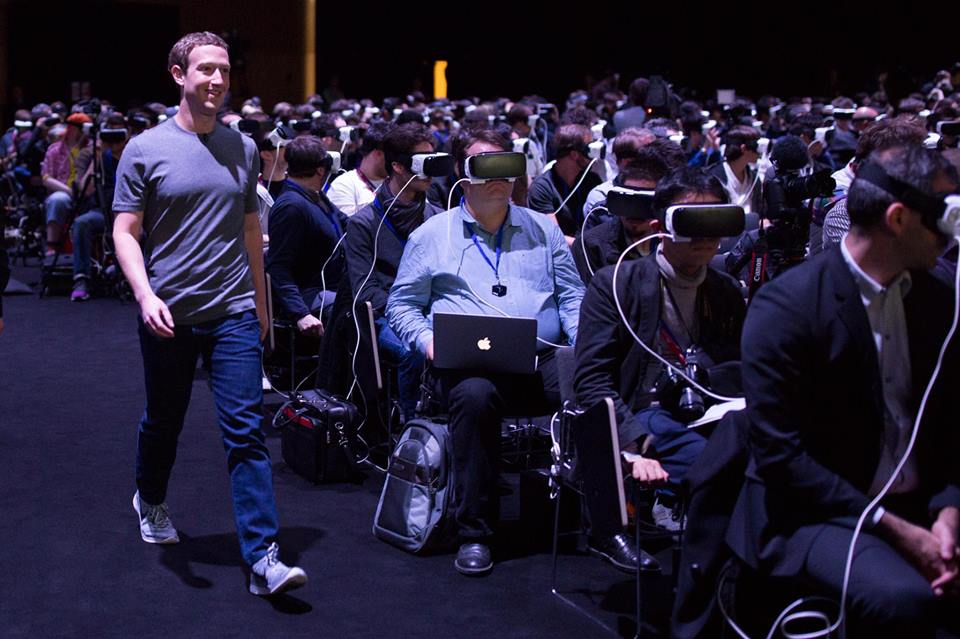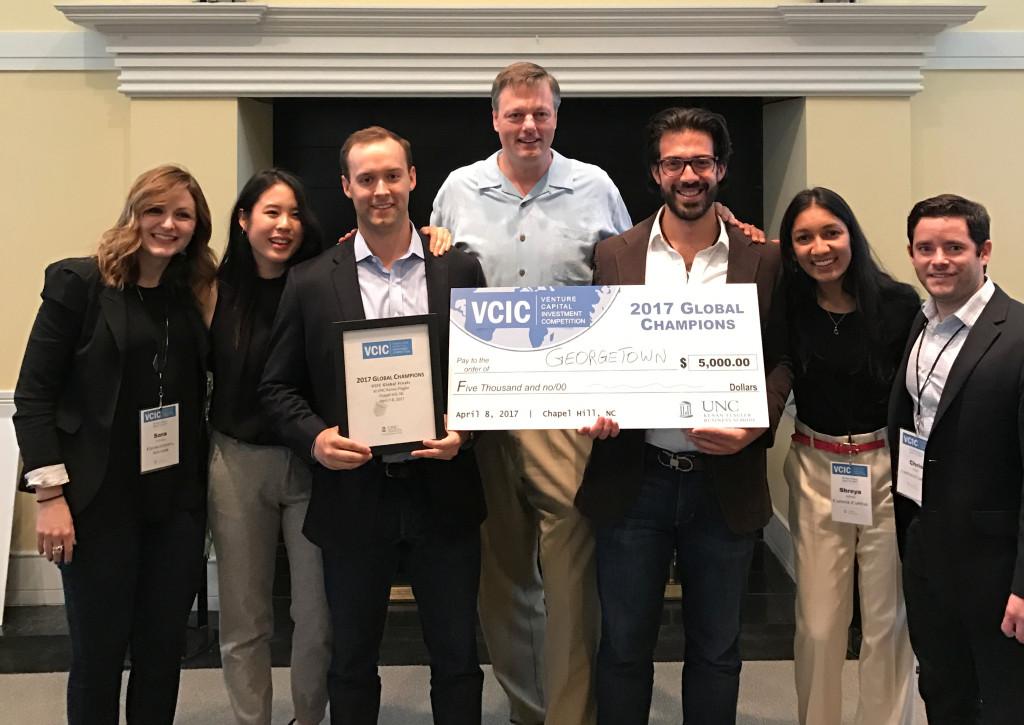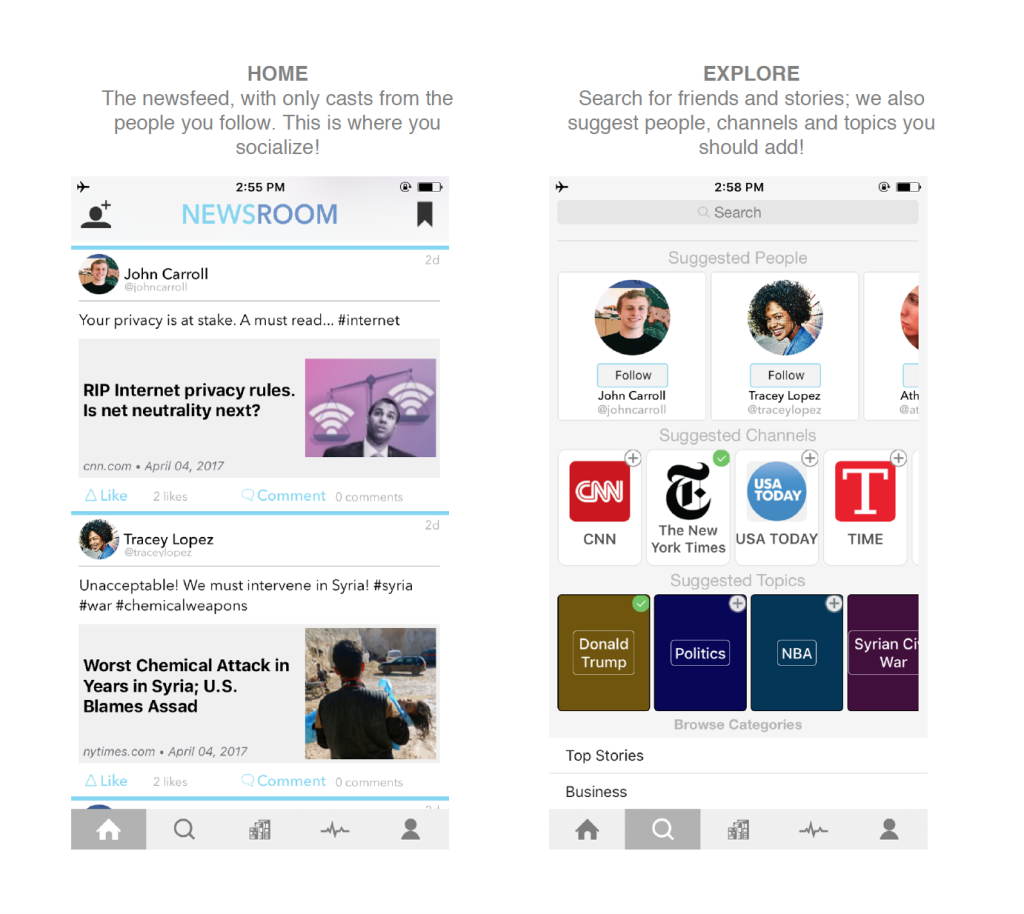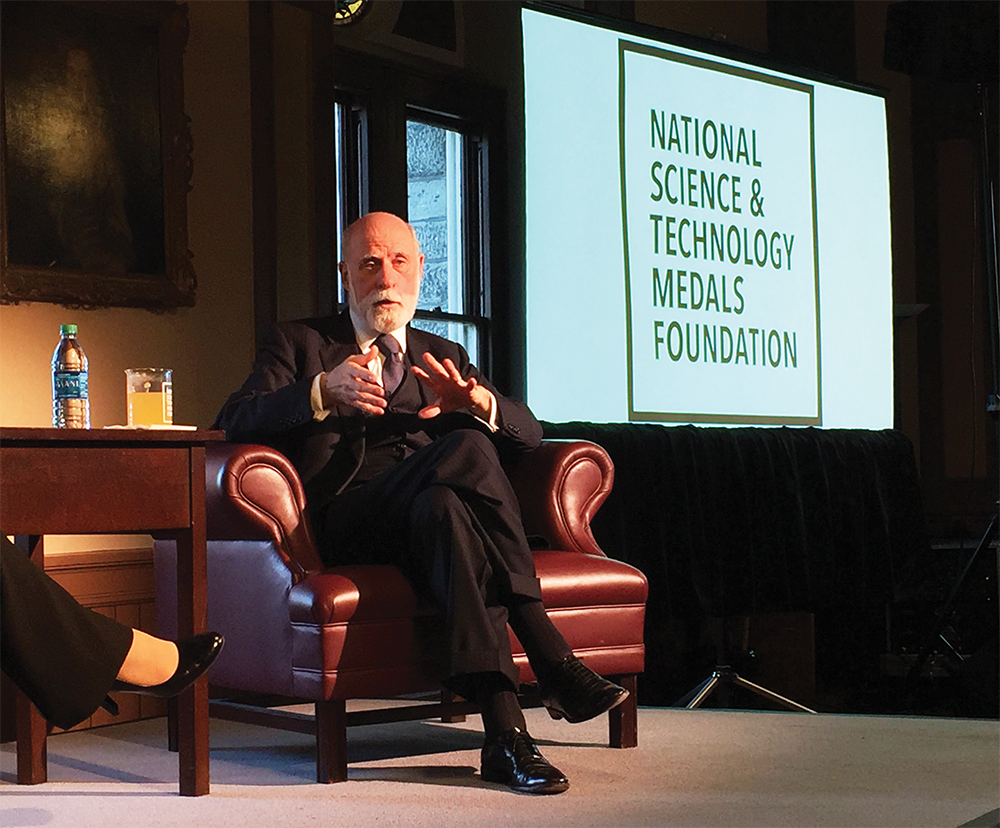
Facebook CEO and cofounder, Mark Zuckerberg strides past an audience wearing Occulus Rift Virtual Reality headsets.
A picture surfaced on the Internet last month that shows Mark Zuckerberg, the curly-haired Facebook co-founder, marching unseen past a crowd of people wearing Oculus Rift virtual reality headsets. In the photo, the people who are allegedly engrossed in a soccer game are unaware the social media CEO is walking by. Surprisingly, he is not wearing a hoodie and he is smiling. Some wonder why he is smiling, speculating that there are dollar signs in his eyes as he dreams about the massive Oculus sales in the future and airtime for advertisements on the Oculus Rift screens. Some say he is striding forward into the role of dictator, ruling a vegetative human population plugged into a virtual reality matrix as he sucks energy out of their bodies for his personal use.
You might say that virtual reality is a bell or a whistle, a luxury trinket idly sought by a disengaged society. People are starving, economies are failing, and your laundry will need to be cleaned at some point: it almost seems like a crime that so much money is being invested into virtual reality development, an unnecessary recreational escape, when there are real problems to be addressed in our real reality. Virtual reality might also inhibit us from building connections with our fellow humans, depriving us from real social interaction and drawing us closer and ever longer to the computer screen. Some would even argue that VR is nothing more than an expensive, geeky phase with no real value.
While you can say whatever you want, you risk sounding like my grandmother. Nearly every worry I’ve heard about VR sounds exactly like our middle school teachers when they spoke about the evils of cell phones back when we were in middle school. Have smart phones replaced face-to-face human interactions? Probably, but we mostly still interact with other humans. Have evil governments used smart phones to oppress you into blind submission to a technological autocracy? Not that I’m aware of.
However, the current state of VR does open up a lot of valid roads for skepticism. During Hoya Hacks, Georgetown’s annual hackathon, in January, I used an Oculus Rift. The prime VR headset is unfortunately on the market to play a simple WWI flying game with terrible graphics. Similarly unimpressive, the people in the Zuckerberg photo were essentially just watching video in 3D. What is the value of VR if all it can deliver is sub-par entertainment, especially at such a ridiculously high price?
Look to the future of VR. Dwell not on what VR is, gaze instead upon what it will become. The Oculus Rift, the “poster boy” VR device, was developed by the Facebook-owned company, Oculus, and was released in March 2016. Just last week, head of Oculus’s Pittsburgh lab, Yaser Sheikh, outlined a ridiculously useful vision of VR’s future: a technology that bridges the space between people to make face-to-face interaction possible without actually being in the same location.
“Imagine a social experience in virtual reality that’s completely indistinguishable from a real world interaction in every aspect,” Sheikh began. That’s the goal; it’s not to coddle your mind into clicking on more Facebook advertisements. Imagine being able to read your friend’s body language in a late-night VR call just as well as you would have if you had met in a tiny pizza shop on the corner at closing time. Imagine being able to find that insurance card your grandpa needs for a doctor’s appointment in his wallet from the airport. Imagine being able to help your mother with the laundry from your … Ok, not that real. The gaming thing is, among other purposes, a cash cow for the VR industry until developers are actually able to virtually connect people virtually in separate locations.
Even in the present day, though, VR experience isn’t all fun and games. The Microsoft HoloLens enhances reality by mixing real world images with imaginary ones. For example, if your laptop screen is too small, you can display your essay in the word processor spreadsheet on the wall of your living room. Maybe you will virtually dress up your real dog as Elvis or make a soul-sucking essay really small and move it onto your dog’s food dish so Elvis can eat your homework. Of course, Microsoft isn’t ditching games. While the situations above are speculative, a brilliant demonstration in 2015 showed that the HoloLens can project a Minecraft world virtually onto a physical table and allow you to manipulate it with your hands.
The HoloLens is currently only available for developers at a slight $3,000 and an Oculus Rift can be preordered for $600. That’s a lot to pay for a just slightly more immersive game experience. That’s why my personal choice is Google Cardboard, a VR headset you can literally buy for $4.
Google Cardboard is a cardboard box with eyeholes, lenses, and a slot for your phone. Cardboard-compatible apps can be downloaded on your phone, a good number of which are free, and viewed through the lenses in the Cardboard headset to create a 3D world around you. These specialized apps split the screen into a special viewing format that allow it to be viewed through the Google Cardboard contraption. However, all the graphics are pretty pathetic so far and to be completely honest, the $4 – $6 price is completely reflective of the quality of experience you will get.
If you get bored with the limited selection of material for viewing on Cardboard, you can always make some of your own. Cardboard makes it easy to view videos taken on 360° cameras. 360° cameras are frighteningly expensive as it is, though some are available for use at the Gelardin New Media Center in Lauinger Library, which also has two Occulus Rift headsets. Currently, Gelardin staff hope to use their full-circle filming capabilities to develop online courses with an immersive visual experience and virtual tours of Georgetown’s campus. You don’t have to wait for them, though, as a good number of 360° videos are already available on YouTube. As you turn with the headset on in real life, your virtual self turns to see what’s happening behind you in the 360° video. It’s slightly frustrating that you can’t see everything that’s happening in all directions at once, but that’s just life.













